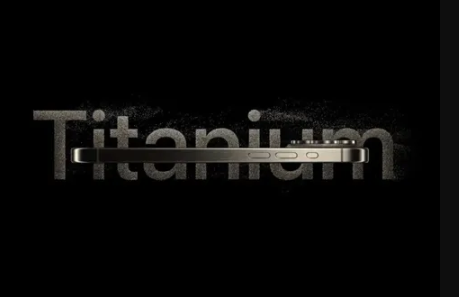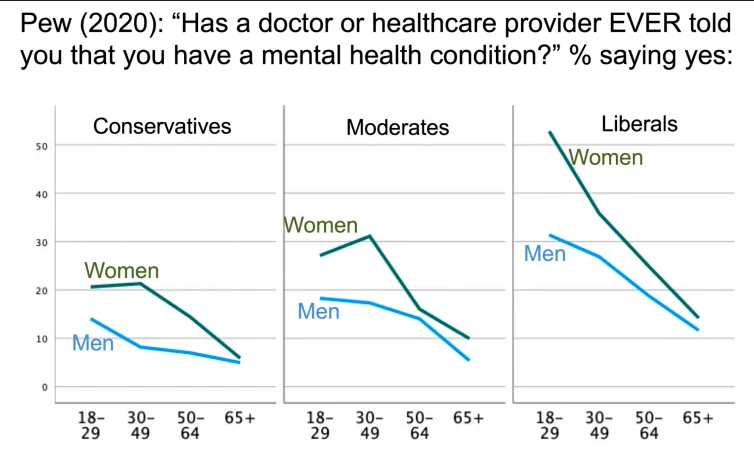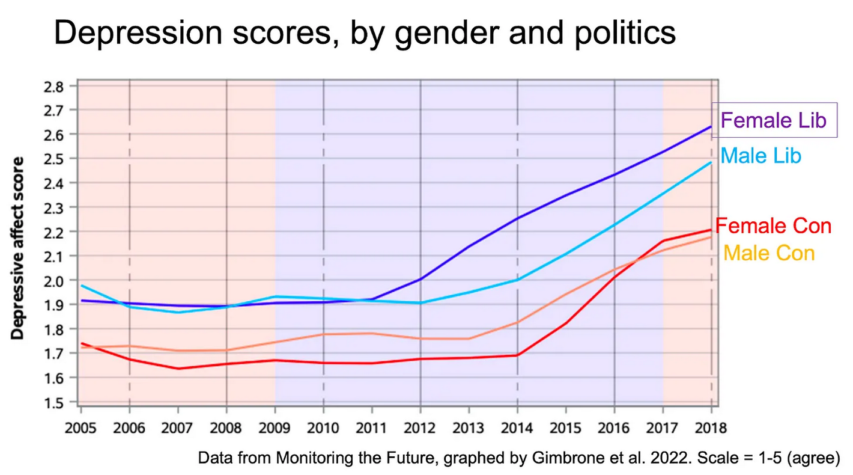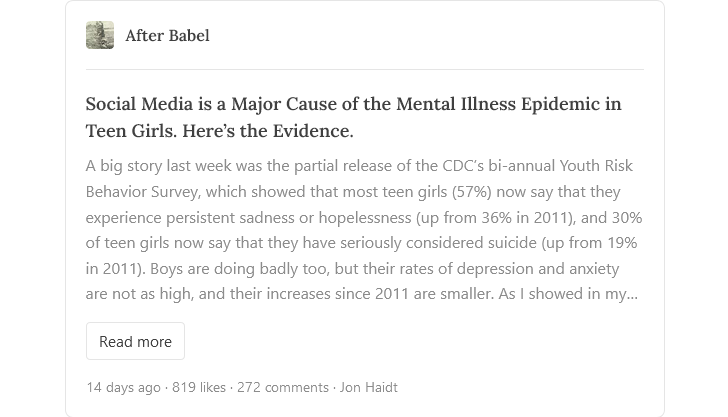Forgotten Weapons
Published 11 Sept 2023The Vugrek family of Croatia (Marko Sr, Marko Jr, and Ivan) were talented firearms designers, who ended up supplying organized crime. Their best-known development was the Agram 2000 submachine gun, a very well-built weapon submitted to Croatian military trials in the early 1990s. In the wake of prosecution for making the Agram illicitly after its military rejection, Marko Vugrek developed a number of guns specifically for illicit use, including this well-done cell phone gun. They began to turn up in the Balkans and throughout Europe around 2007, and investigations traced them back to their Croatian creator.
A big thanks to the Croatian Police Museum (Muzej Policije) in Zagreb for giving me access to film this rare piece for you! Check them out at: https://muzej-policije.gov.hr
(more…)
January 2, 2024
Vugrek’s Cell Phone Gun for Organized Crime
November 27, 2023
The slackening pace of technological innovation
Freddie deBoer thinks we’re living off the diminishing fumes of a much more innovative and dynamic era:
I gave a talk to a class at Northeastern University earlier this month, concerning technology, journalism, and the cultural professions. The students were bright and inquisitive, though they also reflected the current dynamic in higher ed overall – three quarters of the students who showed up were women, and the men who were there almost all sat moodily in the back and didn’t engage at all while their female peers took notes and asked questions. I know there’s a lot of criticism of the “crisis for boys” narrative, but it’s often hard not to believe in it.
At one point, I was giving my little spiel about how we’re actually living in a period of serious technological stagnation – that despite our vague assumption that we’re entitled to constant remarkable scientific progress, humanity has been living with real and valuable but decidedly small-scale technological growth for the past 50 or 60 or 70 years, after a hundred or so years of incredible growth from 1860ish to 1960ish, give or take a decade or two on either side. You’ve heard this from me before, and as before I will recommend Robert J. Gordon’s The Rise & Fall of American Growth for an exhaustive academic (and primarily economic) argument to this effect. Gordon persuasively demonstrates that from the mid-19th to mid-20th century, humanity leveraged several unique advancements that had remarkably outsized consequences for how we live and changed our basic existence in a way that never happened before and hasn’t since. Principal among these advances were the process of refining fossil fuels and using them to power all manner of devices and vehicles, the ability to harness electricity and use it to safely provide energy to homes (which practically speaking required the first development), and a revolution in medicine that came from the confluence of long-overdue acceptance of germ theory and basic hygienic principles, the discovery and refinement of antibiotics, and the modernization of vaccines.
Of course definitional issues are paramount here, and we can always debate what constitutes major or revolutionary change. Certainly the improvements in medical care in the past half-century feel very important to me as someone living now, and one saved life has immensely emotional and practical importance for many people. What’s more, advances in communication sciences and computer technology genuinely have been revolutionary; going from the Apple II to the iPhone in 30 years is remarkable. The complication that Gordon and other internet-skeptical researchers like Ha-Joon Chang have introduced is to question just how meaningful those digital technologies have been for a) economic growth and b) the daily experience of human life. It can be hard for people who stare at their phones all day to consider the possibility that digital technology just isn’t that important. But ask yourself: if you were forced to live either without your iPhone or without indoor plumbing, could you really choose the latter? I think a few weeks of pooping in the backyard and having no running water to wash your hands or take a shower would probably change your tune. And as impressive as some new development in medicine has been, there’s no question that in simple terms of reducing preventable deaths, the advances seen from 1900 to 1950 dwarf those seen since. To a remarkable extent, continued improvements in worldwide mortality in the past 75 years have been a matter of spreading existing treatments and practices to the developing world, rather than the result of new science.
ANYWAY. You’re probably bored of this line from me by now. But I was talking about this to these college kids, none of whom were alive in a world without widespread internet usage. We were talking about how companies market the future, particularly to people of their age group. I was making fun of the new iPhone and Apple’s marketing fixation on the fact that it’s TITANIUM. A few of the students pushed back; their old iPhones kept developing cracks in their casings, which TITANIUM would presumably fix. And, you know, if it works, that’s progress. (Only time and wear and tear will tell; the number of top-of-the-line phones I’ve gone through with fragile power ports leaves me rather cynical about such things.) Still, I tried to get the students to put that in context with the sense of promise and excitement of the recent past. I’m of a generation that was able to access the primitive internet in childhood but otherwise experienced the transition from the pre-internet world to now. I suspect this is all rather underwhelming for us. When you got your first smartphone, and you thought about what the future would hold, were your first thoughts about more durable casing? I doubt it. I know mine weren’t.
Why is Apple going so hard on TITANIUM? Well, where else does smartphone development have to go? In the early days there was this boundless optimism about what these things might someday do. The cameras, obviously, were a big point of emphasis, and they have developed to a remarkable degree, with even midrange phones now featuring very high-resolution sensors, often with multiple lenses. The addition of the ability to take video that was anything like high-quality, which became widespread a couple years into the smartphone era, was a big advantage. (There’s also all manner of “smart” filtering and adjustments now, which are of more subjective value.) The question is, who in 2023 ever says to themselves “smartphone cameras just aren’t good enough”? I’m sure the cameras will continue to get refined, forever. And maybe that marginal value will mean something, anything at all, in five or ten or twenty years. Maybe it won’t. But no one even pretends that it’s going to be a really big deal. Screens are going to get even more high-resolution, I guess, but again – is there a single person in the world who buys the latest flagship Samsung or iPhone and says, “Christ, I need a higher resolution screen”? They’ll get a little brighter. They’ll get a little more vivid. But so what? So what. Phones have gotten smaller and they’ve gotten bigger. Some gimmicks like built-in projectors were attempted and failed. Some advances like wireless charging have become mainstays. And the value of some things, like foldable screens, remains to be seen. But even the biggest partisans for that technology won’t try to convince you that it’s life-altering.
October 11, 2023
In their attacks on southern Israel, Hamas is “making a dead zone, and they intend to make a dead zone”
Chris Bray explains the otherwise insane tactics employed by Hamas terrorists:

The border area between the Gaza Strip and the State of Israel, 9 October 2023.
Map by Ecrusized via Wikimedia Commons.
Hamas broke through a fortified border, had unchallenged freedom of movement inside Israel for a shockingly long time, and attacked … a dance music festival and some kibbutzim. Not airfields, not fuel depots, not power stations, not army motor pools to deny mobility to the enemy. They went after soft targets first, and focused especially on women and children. Eyewitness reports and footage of female hostages are telling us that Hamas engaged in sustained sexual violence, and took care to make it known. A subhed in Tablet: “Scenes of young women raped next to the dead bodies of their friends.”
And I think we know what this means.
But first, look at the proposed explanations offered in the news:
It seems that Hamas, also, is trying to force Israel into negotiations. In 2018, Hamas leader Yahya Sinwar sent a note in Hebrew to Israel’s prime minister, Benjamin Netanyahu, suggesting he take a “calculated risk” by agreeing a long-term truce. While Netanyahu agreed to some easing of pressure on Gaza, he was unwilling to accept Hamas’s long-term demands, including a large-scale prisoner swap, lifting the siege by opening the international border crossing, and establishing a port and airport in Gaza. After 16 years of siege and several catastrophic rounds of war, in which thousands of Gaza residents have been killed, Hamas may be hoping to break the deadlock.
That’s not it. Here’s another try:
Hamas could well be trying to torpedo the Saudi deal and even try undo the existing Abraham Accords. Indeed, a Hamas spokesperson said that the attack was “a message” to Arab countries, calling on them to cut on ties with Israel …
To be clear: Saying it makes strategic sense for Hamas to engage in atrocities is not to justify their killing civilians. There is a difference between explanation and justification: The reasoning behind Hamas’s attack may be explicable even as it is morally indefensible.
So the much-repeated claim is that Hamas in engaging in diplomatic maneuvering, sending messages to nation-states. They used mass rape at a dance festival to gain leverage in negotiations over a possible new port.
That’s absolutely not it, and I strongly suspect that the presence of widespread and carefully displayed attacks on 1.) families with children and 2.) the sexually traumatized bodies of women represent an extremely deliberate and calculated adoption, explicitly planned for months or years, of the familiar tools of ethnic cleansing.
Hamas is dirtying the memory of the Jewish spaces bordering on the Gaza Strip. They’re marking southern Israel in the memory of future families, and especially women of childbearing age, with the deliberately cultivated images of murdered children and the mass rape of young women, so that young women regard the place with dread and don’t return to have children there. They’re making a dead zone, and they intend to make a dead zone.
Mass rape by armies is not a mystery; it has been studied carefully.
Group X, as a group and deliberately, rapes women from Group Y in Neighborhood Z so women from Group Y never feel that they can safely return to Neighborhood Z, in a tribal memory passed down to later generations. Now the space belongs to Group X.
Hamas is making sites of trauma. To empty them, and to keep them empty.
Their military objective is to use the witnessed mass rape of women, the documented hunting and torture of families, and the videotaped murder of children in front of their parents to keep Jews out of southern Israel in the future. Their military target is site-specific Jewish fertility.
In the comments, Chris also points out the military insanity of how Hamas is implementing the propaganda aspects of their plan:
It’s insane for infantry to carry cellphones into combat, because cellphone locations can be tracked. But Hamas seems to be recording everything they do, and they’re stopping to upload new footage as they capture it. They’re taking the risk of carrying trackable devices in combat for the intended benefit of the display. I’d be very curious to hear if they’re all carrying standardized, organization-issued cellphones, and I’d be very curious to see a detailed analysis of where all of the footage is appearing first. This is a deliberate information operation.
Hamas has clearly calculated that the risk is worth the propaganda bonanza they are reaping from the atrocities being beamed almost in real time to the outside world.
October 8, 2023
March 14, 2023
March 9, 2023
February 2, 2023
QotD: “Selfies”
I do not take selfies, but (if I am to tell the truth) it is not because I am appalled at the vacuity doing so seems to require, or at least to call forth: Sheep in a field are more like Rodin’s Thinker than are people who hold their phones on those ridiculous sticks before their faces. No, the problem is that, where the camera and I are concerned, it is not that it never lies, but that it never tells the truth.
I am always appalled by its results. I do not look like that when I glance in the mirror: I look far younger, less bald, wrinkled, ugly in short. I conclude, of course, that I lack that mysterious quality that only some lucky people have: I am not photogenic. If the camera never lied, if it showed me as I truly am, I would come out much better in photos.
I think it was the French-Romanian writer Emil Cioran who said that if a man knew that someone would one day write a biography of him, he would cease to live; in other words, it would paralyze him. In like fashion, if I thought that people would photograph me, I would stay indoors — the millions of spy cameras everywhere don’t count, no one looks at what they have recorded until there has been a murder or a terrorist attack (and then everyone is mostly unrecognizable).
I conclude, therefore, that most people who take selfies are at least minimally satisfied with their appearance, however they may appear to others. But in fact it hardly requires reflection on the selfie as a social, or antisocial, phenomenon to know that very large numbers of people have no idea what they look like to others. Or perhaps it is simply that they don’t care.
Theodore Dalrymple, “Suit Yourselfie”, Taki’s Magazine, 2017-09-16.
January 1, 2023
QotD: The amazing economic impact of mobile phones in the developing world
One of the interesting findings about mobile phones is that they grow the economy. In a country without a general landline network – ie, all the poor ones – 10% of the population gaining a mobile increases GDP by 0.5%. No, not the growth rate goes up from 2% to 2.01%. But an additional 0.5% of GDP each year. Which is, by the standards of these things, pretty big.
We also know why too. Being able to contact people means that markets complete, contracts and transactions are possible. It’s no longer necessary to near randomly meet someone physically in order to be able to organise a transaction. Thus more transactions happen – the value added in voluntary transactions being that GDP which is increasing.
Tim Worstall, “Mobile Phones Cut The Murder Rate – For the Same Reason They Grow The Economy”, Continental Telegraph, 2019-05-30.
November 16, 2022
Can Plant Identification Apps Be Used for Foraging?
Atomic Shrimp
Published 8 Jul 2022There are numerous smartphone apps that assist with identification of plants. A lot of people have proposed these for use in identification of plants to forage for the table. Just how good are these apps, and is it safe to use them in that way?
(more…)
July 19, 2022
Drawing the proper lessons from the massive Rogers outage earlier this month
In The Line, Matt Gurney explains the really important lesson that seems to have escaped a lot of the critics who covered the Rogers internet/cell/TV outage that took a third of the country offline for 24 hours or more:
Most of the conclusions reached after the Rogers telecommunication outage two weeks ago are wrong. Millions of people lost home internet, television and cellphone service for the better part of a day (some for much longer). For those who had all their services bundled with Rogers, this meant being entirely cut off, including from access to emergency services. It was a big deal, both in terms of lost economic productivity and for those Canadians who needed help and could not access it.
The problem isn’t with Rogers, though. The problem is with everyone else.
I don’t want to be misunderstood. Rogers is bad. It did have a big problem. I am not a fan. Their customer service is generally awful. Their reliability and performance is decidedly meh and the meh costs a fortune. So don’t take this column as some sort of apologia for Rogers. I am one of their customers, but I’m only one of their customers because none of the other options are much better.
But still. The lesson of two Fridays ago shouldn’t be that Rogers is bad. It also shouldn’t be that the CRTC is bad or that our politicians are spineless and that our regulators are thoroughly captured. All of those things are true, but they’re not the lesson. That wasn’t the failure of two Fridays ago. The failure of two Fridays ago was that when one of our telecom companies went down, a pretty horrifying cross-section of Canadian society had no back-up plan.
Let’s imagine an alternate universe where things in Canada simply functioned better. Close your eyes and just dream it up. You’re in a different Canada now. The CRTC is awesome. Our politicians are terrific. Rogers is an incredibly good company that is masterful at delivering services that are overwhelmingly reliable and affordably priced. Even in this increasingly far-fetched parallel timeline, no telecom company is going to bat a thousand. You will never have 100 per cent service reliability. This alternate Canada still has outages — maybe they’re rare and brief, but they’re not unheard of or impossible.
And that’s why we can’t look at what happened two weeks ago as a failure at Rogers. Obviously Rogers failed. But the real failure was a failure of imagination and planning on the behalf of millions of individuals, and a worryingly diverse set of institutions, that did not have a back-up plan.
How dating apps have changed the dating world
Rob Henderson on the changes dating sites have accelerated in the dating community:
“In the United States, 35 percent of Tinder users are college students ages 18 to 24 … ‘I’ve heard a joke on campus that goes something like this: ‘First base is hooking up, second base is talking, third base is going on a date and fourth base is dating’.“ (source).
I am just old enough to remember what the dating scene was like before the rise of Tinder and other dating/hook-up apps. It has changed a lot.
2012 was another world in many ways.
The situation has changed for everyone on the dating market. Even those who don’t use these apps. This is because even for the people who don’t use the apps, they still live in an environment where others use them. Over time, those who don’t use apps must adapt to the preferences and behavior of those who use them. Not the other way around.
One example of how the scene has changed. I have a friend from college. A good-looking guy. He showed me how many women he has matched with: More than 21,000. Twenty-one thousand. Tinder actually identified him as a valuable user early on, and gave him free perks and upgrades. They lifted his radius restrictions. This allowed him to match with even more women. I have another friend. Doesn’t have the best pictures on his profile. But not a bad looking guy. Over roughly the same period of time as my other friend, he has matched with seven women.
Some findings on dating apps:
- 18 to 25 percent of Tinder users are in a committed relationship.
- Women aged 23 to 27 are twice as likely to swipe right (“liked”) on a man with a master’s degree compared with a bachelor’s degree.
- Men swipe right (“liked”) on 62 percent of the women’s profiles they see; women swipe right (“liked”) on only 4.5 percent of the men’s profiles they see.
- Half of men who use dating apps while in a committed relationship reported having sex with another person they met on a dating app. All women who used dating apps while in a committed relationship reported having sex with another person they met on a dating app.
- 30 percent of men who use Tinder are married.
- In terms of attractiveness, the bottom 80% of men are competing for the bottom 22% of women and the top 78% of women are competing for the top 20% of men.
One way dating apps might be changing the dating scene. People used to have to go out to meet people. And it was costly to lose a relationship partner, in part because of the process involved in meeting someone new. Today, people know that a new partner is a few swipes away. Partners might be more replaceable. If things start deteriorating with their current partner, some can pull out a goldmine in their pocket.
There may be some sexual stratification going on as well. My two friends are examples of the above finding that being slightly more attractive as a man leads to far more matches.
July 11, 2022
Canadians deserve better than “core network maintenance problems” for critical cell phone and internet services
Our internet service provider, Rogers, suffered a major network failure early on Friday morning, taking down not just wired internet services, but also cable TV, and cell phone services and causing knock-on issues that utterly disrupted many emergency 911 services, government websites, banks (including ATM and point-of-sale terminals) and many more. I subscribe to both Rogers internet and Rogers cell phone services, but fortunately my wife has a different wireless phone provider so we weren’t completely offline all of Friday and most of Saturday. Michael Geist and his family weren’t as lucky:
Like many Canadians, I spent most of the massive Rogers outage completely offline. With the benefit of hindsight, my family made a big mistake by relying on a single provider for everything: broadband, home phone, cable, and wireless services on a family plan. When everything went down, everything really went down. No dial tone, no channels, no connectivity. Work was challenging and contact with the kids shut off. It was disorienting and a reminder of our reliance on communications networks for virtually every aspect of our daily lives.
So what comes next? We cannot let this become nothing more than a “what did you do” memory alongside some nominal credit from Rogers for the inconvenience. Canada obviously has a competition problem when it comes to communications services resulting in some of the highest wireless and broadband pricing in the developed world. Purchasing more of those services as a backup – whether an extra broadband or cellphone connection – will be unaffordable to most and only exacerbate the problem. Even distributing the services among providers likely means that consumers take a financial hit as they walk away from the benefits from a market that has incentivized bundling discounts. Consumers always pay the price in these circumstances, but there are policy solutions that could reduce the risk of catastrophic outages and our reliance on a single provider for so many essential services.
First, there is a need to better understand what happened and why. Rogers CEO says the problem lies with maintenance to the core network, which caused some routers to malfunction. But that’s just tech talk. Canadians deserve answers that explain not only how this happened, but how we find ourselves in a position where malfunctioning routers at one company cause a nationwide payment system to go down, government services to be taken offline, and emergency services to be rendered inaccessible. It is one thing for my household to make a mistake, but another for Interac to do so. That means conducting an open CRTC process into this outage alongside a Parliamentary hearing on the broader issues since this is a matter that requires both regulatory and political response. There is no need to wait: these hearings must happen this month with the goal of identifying the scope and source of the problem along with potential policies that might mitigate future harms.
Neither the CRTC nor the current government has shown much inclination to challenge the big telcos. CRTC Chair Ian Scott has reversed years of a consumer-focused Commission into one more comfortable supporting the big providers, while the government has been far more interested in sabre rattling or shaking down Internet companies than taking on big telecom. Yet as we were reminded on Friday, the linkage to the availability of essential services – payments, health care, government services – runs through the telcos, not the Internet companies.
This is the second object lesson in concentrated power in a small number of government-approved hands this year. Our first wake-up call was when the government prompted chartered Canadian banks to cut off some of their customers from all financial services even though no crimes had been committed and no charges were laid. It’s not clear how many people were affected, but arbitrarily denying people access to their bank accounts and credit cards should have rung alarm bells for many people. Now, we’ve been shown how dangerous it can be to allow a very small number of companies to divide the mobile phone and internet service market between them and use the power of government to keep out potential competitors. Will enough Canadians notice?
May 28, 2022
“… the only thing that is history are any immediate hopes for a more competitive communications marketplace in Canada”
Michael Geist pans the latest official misinformation from the federal government on telecommunications legislation:
Innovation, Science and Industry François-Philippe Champagne unveiled the government’s proposed new telecom policy directive yesterday, hailing it as a “historic step”. However, a closer look at the policy suggests that the only thing that is history are any immediate hopes for a more competitive communications marketplace in Canada. Once again, the government has shown itself unwilling to take a strong stand in favour of consumers and competition, instead releasing a directive that largely retains the status quo and sends the message to CRTC Chair Ian Scott to stay the course. Indeed, the primary purpose behind the announcement would appear to be an attempt to shield the government from criticism over its decision to leave the controversial CRTC decision on wholesale Internet access intact, thereby denying consumers the prospect of lower costs for Internet services.
While the new proposed policy directive features much needed details and helpfully replaces the 2006 and 2019 directives that often conflicted and enabled the CRTC to pay little more than lip service to the issue, it sends a strong signal that it is happy with the Commission’s current approach. For example, the directive’s summary on measures to address wholesale Internet access are all about the status quo: “requiring large companies to continue to give access to competitors” or “directing the CRTC not to phase out the existing model for wholesale access.” These are not instructions to change.
The same is true for mobile wireless competition. Rather that using the opportunity to accelerate competition through mobile virtual network operators, the CRTC is instead to directed to improve its hybrid MVNO model “as necessary”. A full MVNO model? The government says it is prepared to support it “if needed”. Based on the current market, it apparently believes it isn’t needed.
December 5, 2021
QotD: The oddity about online ads
I’ve often thought it odd that many companies and publications seemingly believe that the way to charm customers, or ostensible customers, is to make them resent pretty much any interaction with their websites.
David Thompson commenting on “Thrilling Content Goes Here”, DavidThompson, 2021-08-30.
August 1, 2021
Gresham’s Law, as applied to photography
In economics, Gresham’s Law states that “bad money drives out good”, that may need to be reformulated as it applies to modern standards of photography in a formulation something like: “bad photos drive out good photos“:
“Art is like a joke, either you get it or you don’t.” So it was explained to me in the late 1970s by photographer Randy Eriksen, whose cheeky observation about the importance of context to one’s appreciation of either comedy or art could have been a parenthetical second subtitle for author and educator Kim Beil’s Good Pictures: A History of Popular Photography (Stanford University Press, 2020).
Beil’s episodic and highly readable book identifies 50 photographic trends — illustrated by hundreds of vintage and contemporary photographs — that have guided the aesthetics of photography since 1851, when a group of American daguerreotypes made a splash at the Crystal Palace Exhibition in London. Back in 1851, context mostly equaled 1851, as the latest photo technology of the day played a major role in how Victorians decided that one picture was good and another was not.
[…]
Beil’s own context began in Albany, New York, where she grew up. “My mom was into photography,” Beil tells me over the phone. “She was the one who took the pictures in my family. When my parents got me my first camera, a Nikon FE, they made me attend a class offered by the camera store. I remember it was held in this dark ballroom at an Albany hotel. It was me and a bunch of middle-aged men. That’s where I learned about 35mm cameras, f-stops, and shutter speeds.”
“How To Make Good Pictures” (Rochester, NY: Eastman Kodak Co., 1943).
Source: Collection of the Prelinger Library, via Collectors Weekly.Beil also learned from various “How to Make Good Pictures” manuals published by Kodak, which also hailed from upstate New York. “I’m pretty sure I internalized the advice I read in ‘How to Make Good Pictures’,” Beil says of her early aesthetic indoctrination, “things like avoiding centering your subject in the frame, the rule of thirds, shooting during ‘golden hour’, all that conventional wisdom.”
[…]
“Intention is central to the way I think about art, and maybe even how we define it,” Beil agrees. “Take lens flare: I think the power of lens flare comes from its initial unintentional use by people who were just taking casual pictures without any premeditation, without much intention.” In these sorts of photographs, Beil says, lens flare was an amateur mistake that conferred “a kind of authenticity to an image.” That’s why advertisers find lens flare so appealing. “Because we still associate it with authenticity,” Beil says, “it makes an advertising photo seem more real, maybe even spontaneous.”
Today, lens flare is so widely used, so intentional, that billions of smartphone cameras offer multiple variations of this former failing in the form of filters, which can be activated with a click or a swipe. “Everything can be achieved and there are no more accidents,” Beil says of photography in the 2020s, “so photographers look to things that happened before to reinsert some kind of authenticity into their pictures.” Thanks to technology, photographers can now pretend to take pictures as if they lacked the tools to make their pictures, well, good.
The problem, of course, is that technology is intrusive, inserting itself into aesthetics and even cultural paradigms without being invited to do so. “We have a situation today,” Beil says, “in which our smartphone cameras are producing pictures according to the criteria of software designers, who have made a lot of egregious assumptions about the tonality of skin color.” According the Beil, because the sample sets used by software designers have historically included more pictures of light skin tones than dark skin tones, the colors captured by our smartphone cameras do a better job of reproducing the lighter skin tones. “People with darker skin aren’t represented in the way that they want to be,” she says, “or even in the way that’s accurate. Google has promised that the Pixel 6 camera coming out in October 2021 is going to deal with that problem,” she adds, but Beil doesn’t sound like she’s expecting much more than an incremental improvement.












